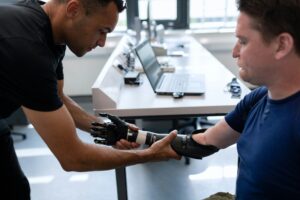Can a Veterinarian become a Doctor for Human?
Are you a veterinarian wanting to become a human doctor? The idea of transitioning from caring for animals to treating humans might seem like a significant leap, but it’s a path that some veterinarians have successfully navigated. Let’s delve into the process of becoming a human doctor after a veterinary career and explore the opportunities and challenges associated with this transition.
The Journey from Veterinary Medicine to Human Medicine
Transitioning from veterinary medicine to human medicine involves several steps, including additional education, training, and licensure. While the two fields share foundational knowledge in biology, anatomy, and physiology, there are distinct differences in clinical practice, patient care, and medical ethics that veterinarians must navigate when pursuing a career in human medicine.
Educational Requirements:
-
- Pre-Medical Education: Veterinarians seeking to become human doctors typically need to complete pre-medical coursework, including biology, chemistry, physics, and mathematics, similar to the requirements for aspiring medical students.
-
- Medical School Admission: Veterinarians must apply to medical school and complete the Medical College Admission Test (MCAT) to demonstrate their readiness for medical education. Admission requirements may vary depending on the medical school and individual circumstances.
Medical Education and Training:
-
- Medical School: Once accepted into medical school, veterinarians undergo rigorous medical education and clinical training, similar to their counterparts pursuing traditional medical degrees. The curriculum covers topics such as anatomy, pathology, pharmacology, and clinical rotations in various specialties.
-
- Residency and Specialization: After completing medical school, veterinarians may choose to pursue residency training in a specific medical specialty, such as internal medicine, surgery, pediatrics, or emergency medicine. Residency programs typically last three to seven years and provide specialized training and experience in a particular field.
Licensure and Certification:
-
- Medical Licensing: Upon completing residency training, veterinarians must obtain medical licensure by passing the United States Medical Licensing Examination (USMLE) or the Comprehensive Osteopathic Medical Licensing Examination (COMLEX-USA), depending on their chosen path (MD or DO).
-
- Board Certification: Veterinarians who complete residency training may pursue board certification in their chosen specialty through the American Board of Medical Specialties (ABMS) or the American Osteopathic Association (AOA).
Opportunities:
-
- Diverse Career Paths: Human medicine offers a wide range of career opportunities, from primary care and specialty practice to research, academia, and healthcare administration.
-
- Broader Patient Population: Treating human patients allows veterinarians to apply their clinical skills and medical knowledge to a broader population, addressing a wide range of health issues and medical conditions.
Challenges:
-
- Additional Education and Training: Transitioning to human medicine requires additional education, training, and licensure, which can be time-consuming and financially demanding.
-
- Adapting to New Clinical Practices: Veterinarians must adapt to new clinical practices, patient care protocols, and medical ethics when transitioning to human medicine, which may require a period of adjustment and learning.
In conclusion, while transitioning from veterinary medicine to human medicine is a challenging journey, it’s a path that some veterinarians choose to pursue with dedication and determination. By completing additional education, training, and licensure requirements, veterinarians can successfully transition into human medicine and embark on rewarding careers as human doctors. Whether driven by a passion for helping humans, a desire for new challenges, or a quest for personal and professional growth, the journey from veterinarian to human doctor is a testament to the versatility and resilience of veterinary professionals.





